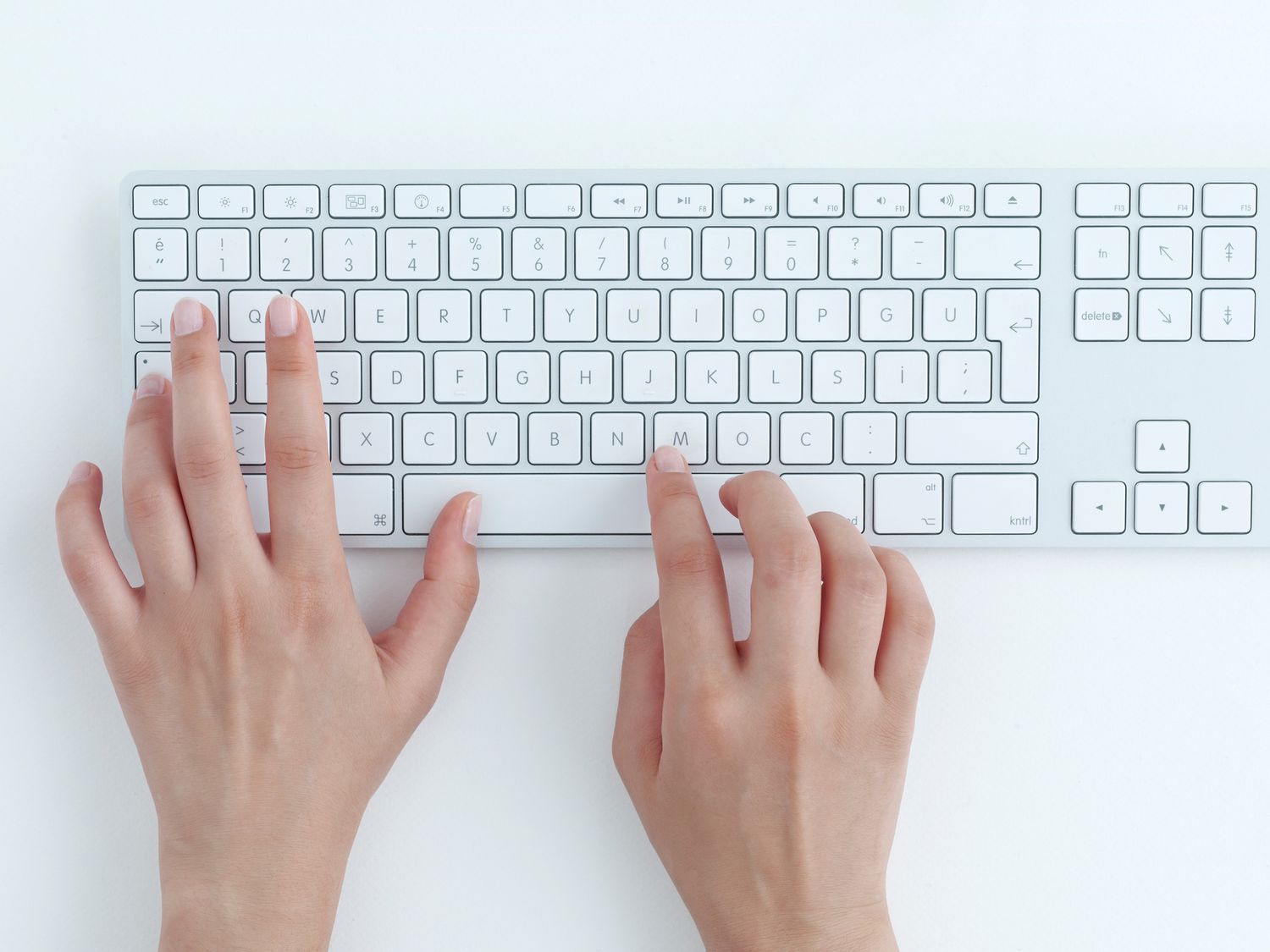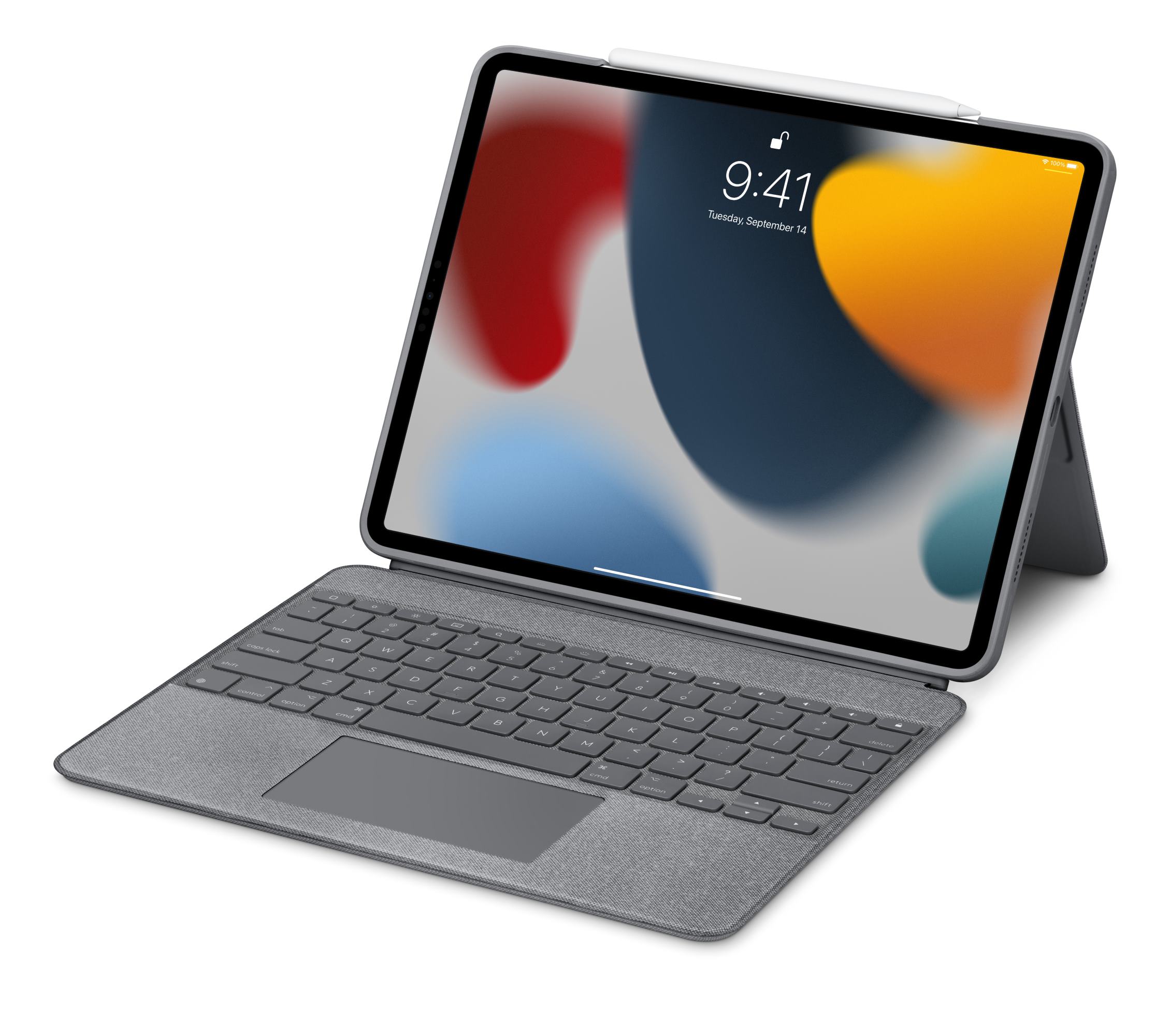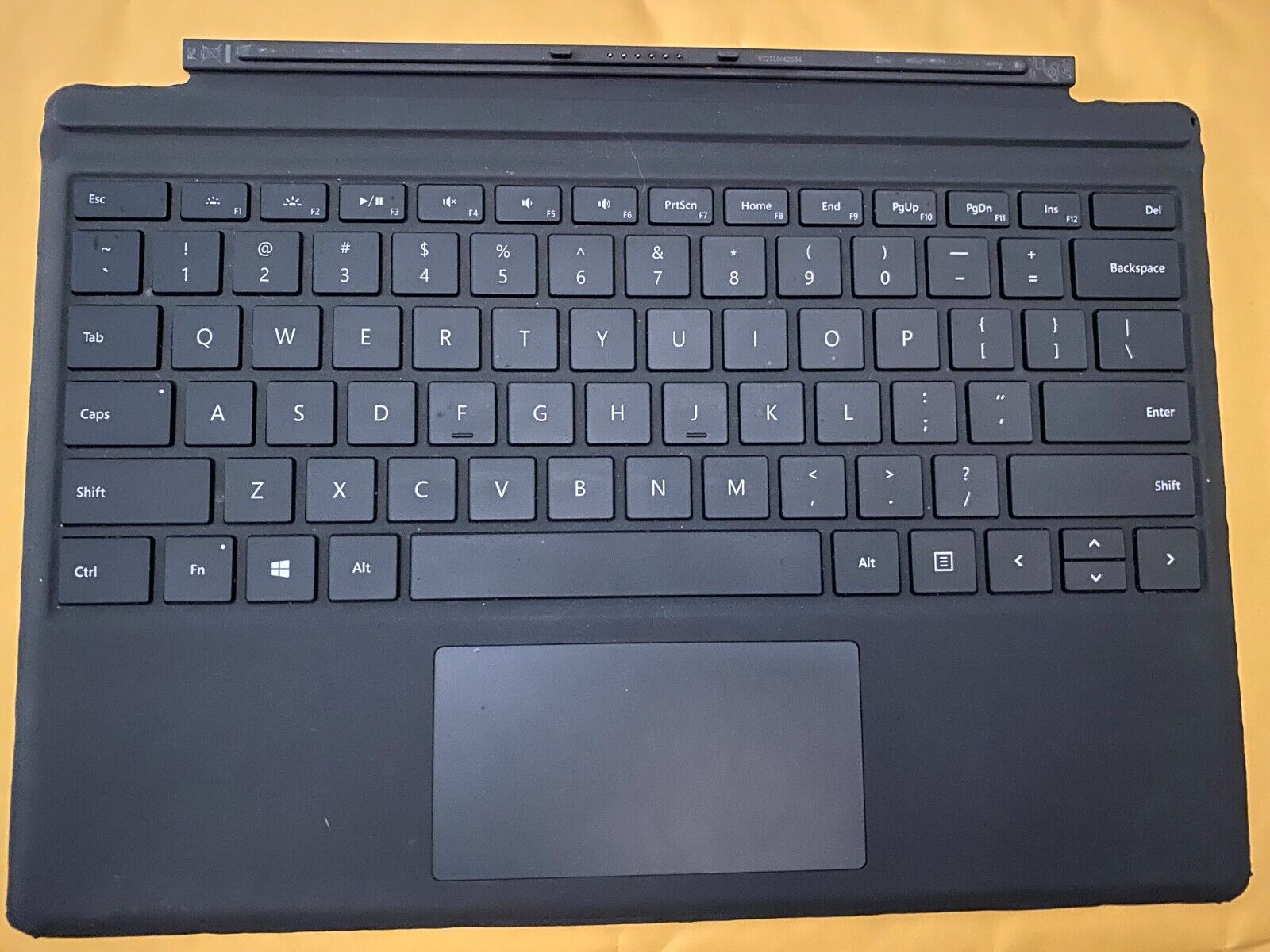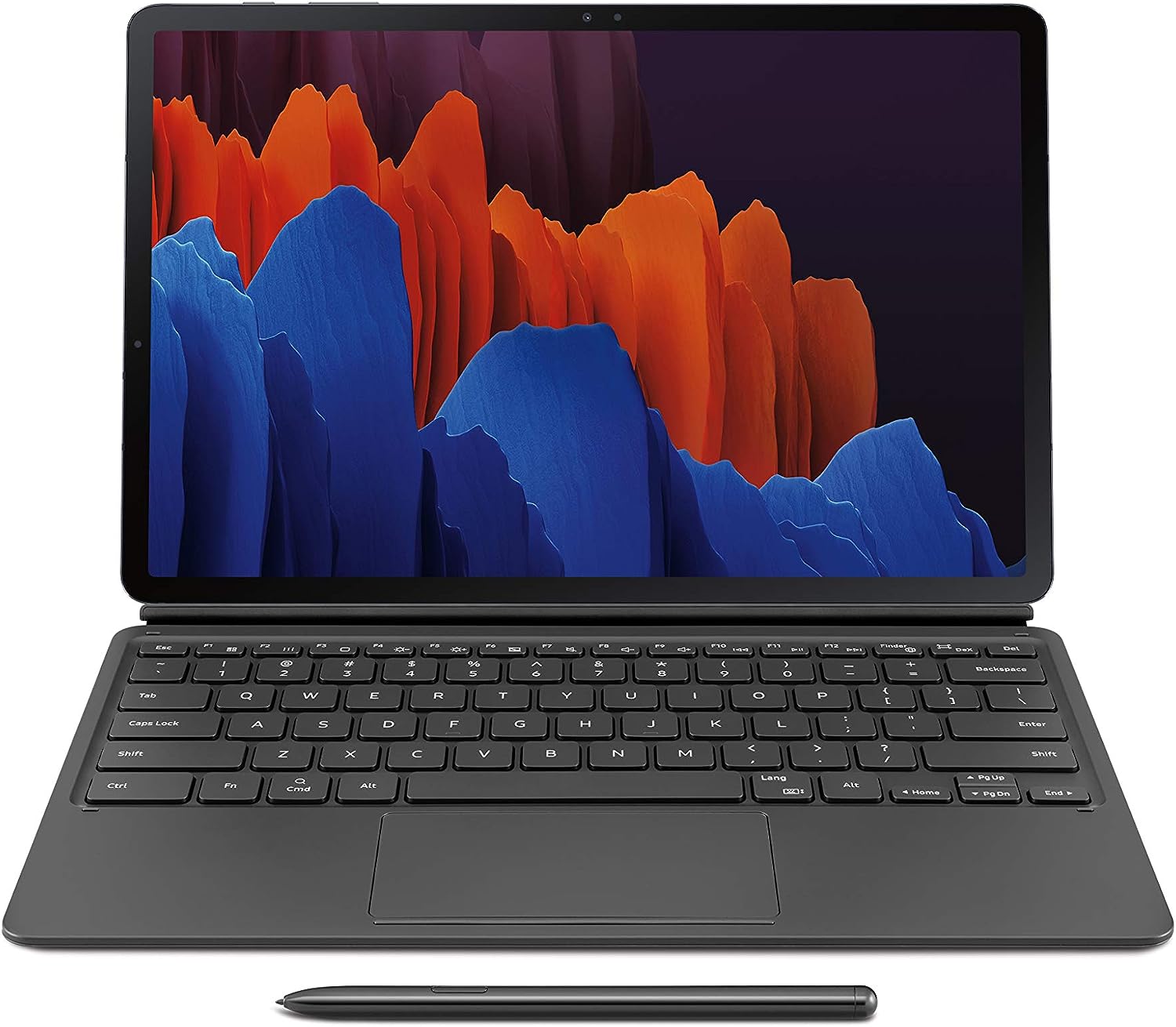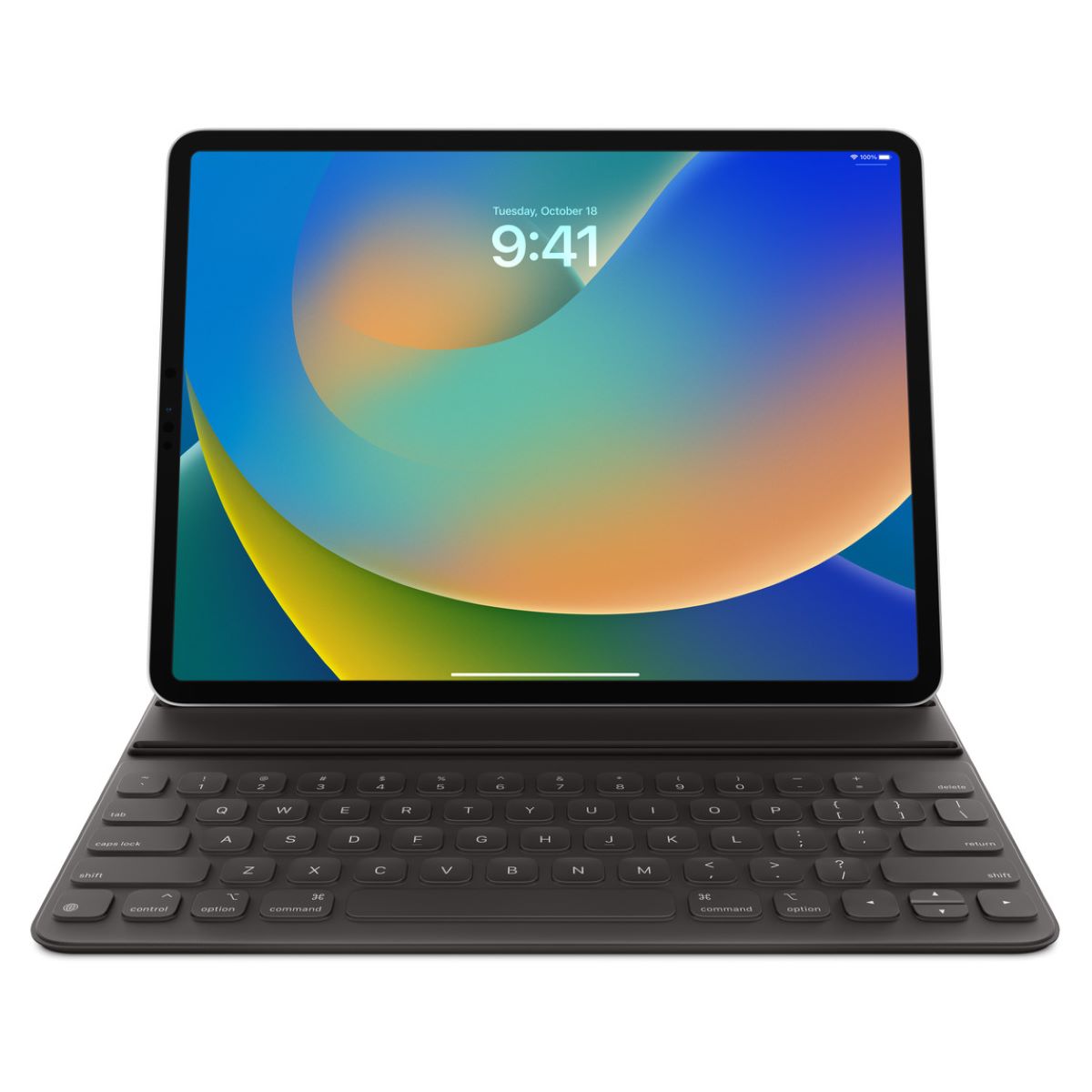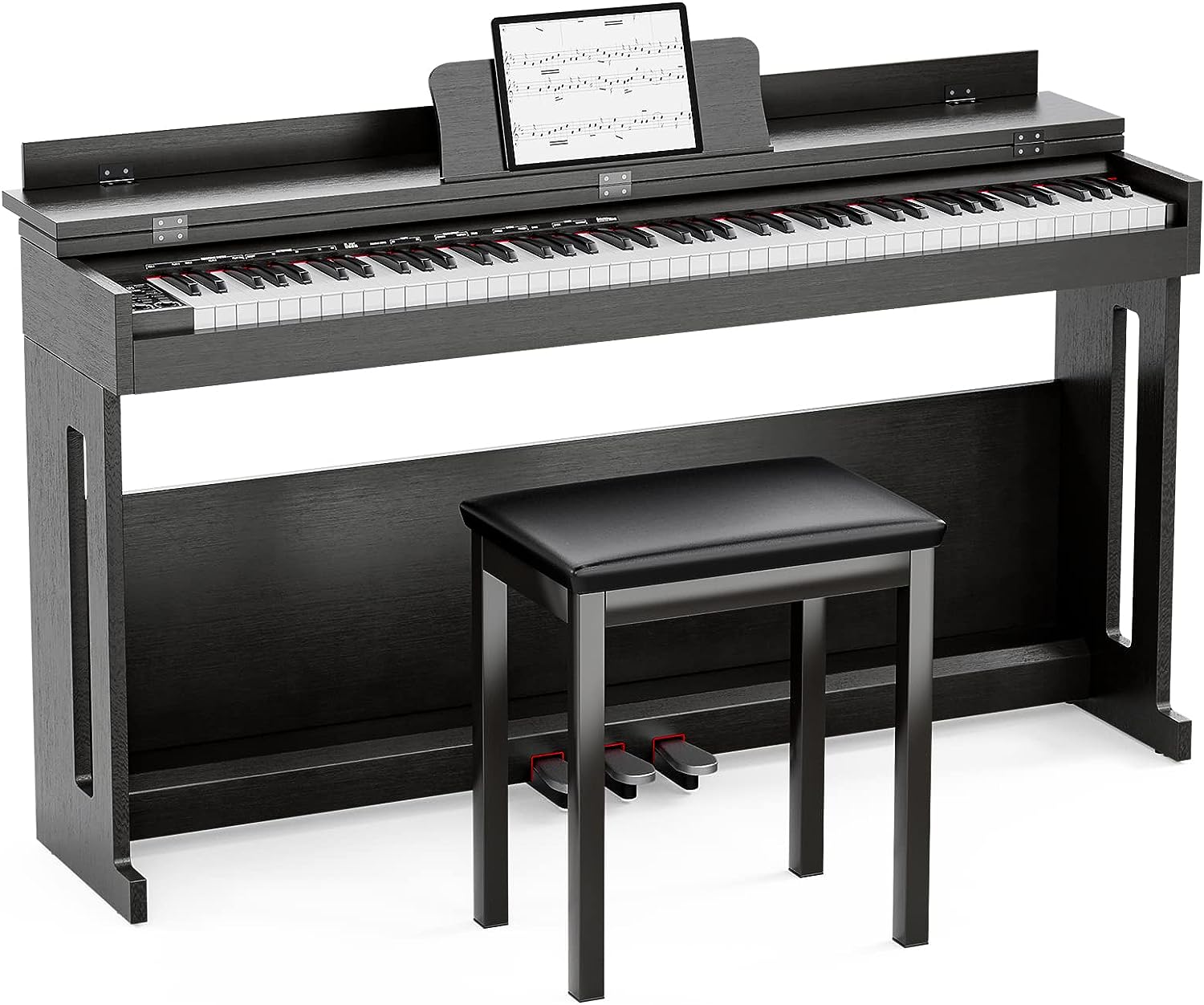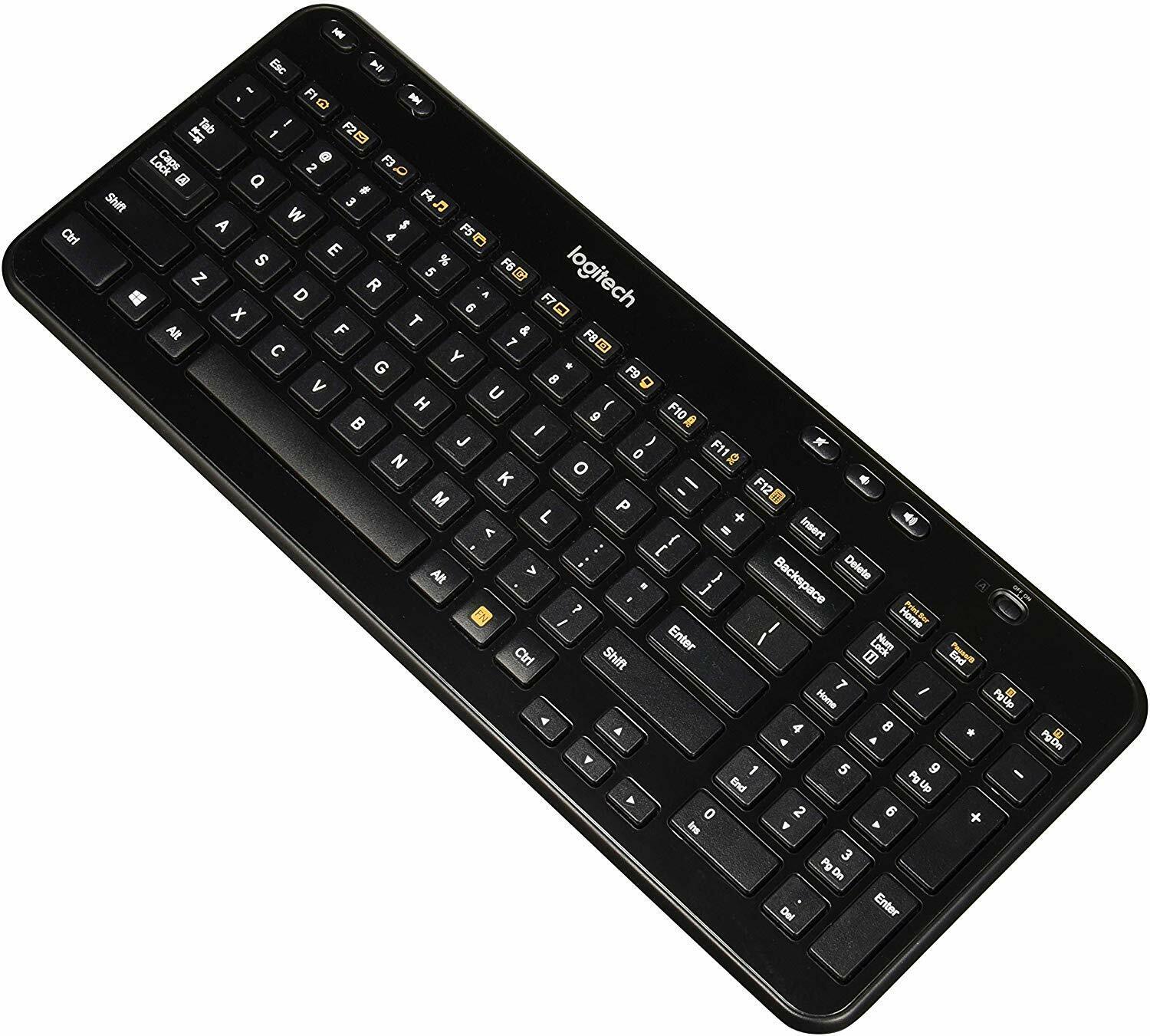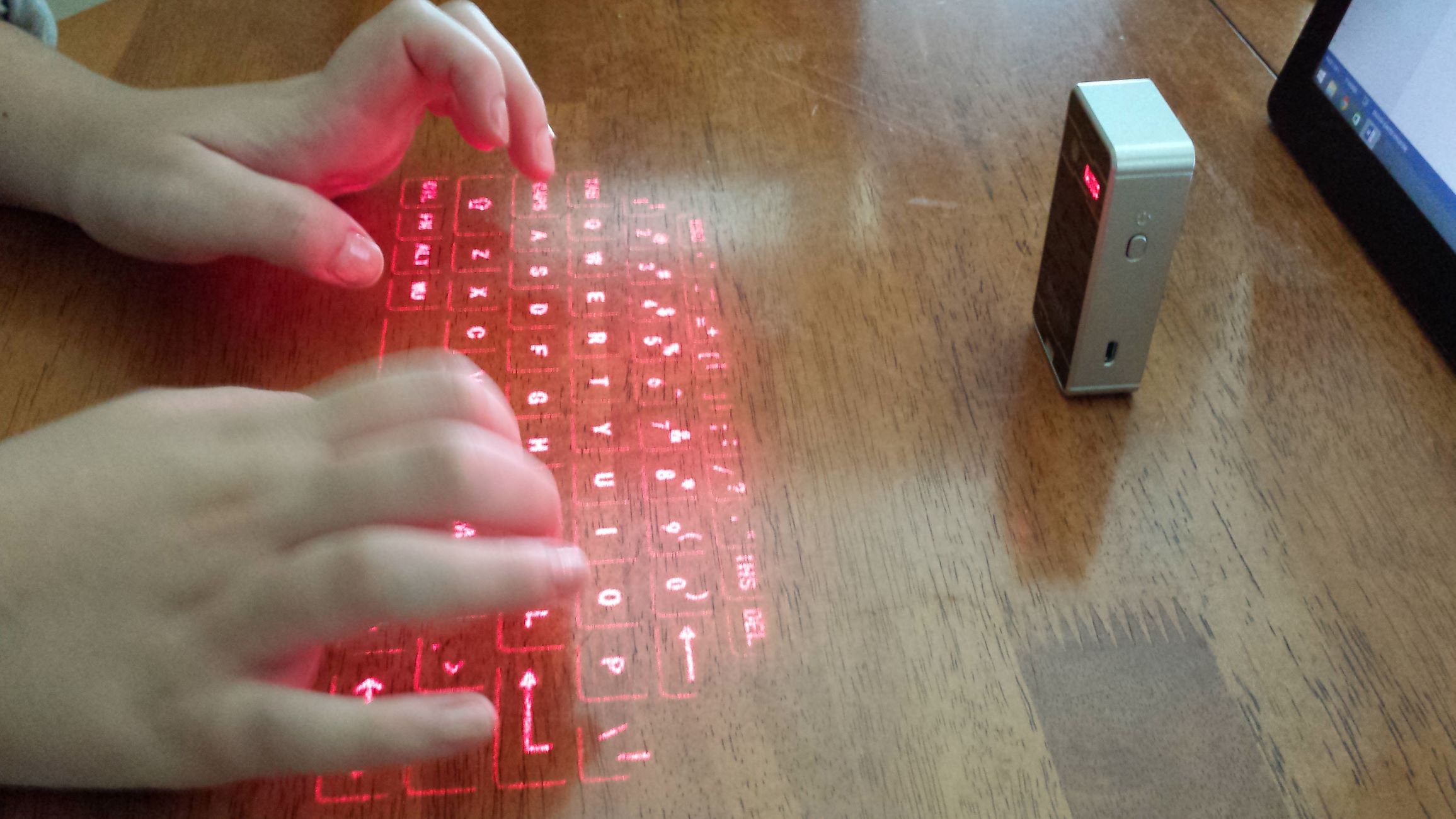Introduction
A keyboard is an essential input device used for typing and executing various commands on a computer or other electronic devices. It allows users to input text, navigate through menus, and interact with software applications. While keyboards come in various shapes, sizes, and designs, they generally share common features and components.
In this article, we will explore the anatomy of a keyboard, examining its key layout, different types of keys, and the various functions they serve. Understanding the structure of a keyboard can be helpful not only for general knowledge but also for using it efficiently and effectively in daily tasks.
Whether you are a professional typist, a casual computer user, or someone interested in the mechanics of technology, learning about the different components of a keyboard can provide valuable insights into how these devices work.
So, let’s dive into the various elements that make up a keyboard, from the layout of the keys to the special functions they perform.
Anatomy of a Keyboard
A keyboard consists of several components that work together to provide users with a seamless typing experience. Understanding the anatomy of a keyboard is crucial for efficiency and accuracy in typing and executing commands. Let’s explore the different elements that make up a keyboard.
1. Key layout: The key layout refers to the arrangement of keys on a keyboard. The most common layout is the QWERTY layout, named after the first six letters on the top row of keys. Other layouts, such as AZERTY or Dvorak, are used in different regions or for specific purposes.
2. Key types: Keyboards consist of different types of keys, including typewriter-style keys, chiclet keys, or mechanical keys. These keys vary in size, shape, and tactile feedback, providing users with different typing experiences.
3. Function keys: Function keys are a row of keys typically located at the top of the keyboard. They provide shortcuts for various functions and commands, such as adjusting volume, controlling media playback, or opening specific applications.
4. Navigation keys: Navigation keys include the arrow keys (up, down, left, right) and the Home, End, Page Up, and Page Down keys. These keys are used for navigating through documents, web pages, or spreadsheets.
5. Modifier keys: Modifier keys, such as Shift, Control (Ctrl), and Alt, alter the behavior or output of other keys when pressed in combination. They are used to execute shortcuts, access alternate characters, or perform specific actions within applications.
6. Numeric keypad: A numeric keypad, also known as a number pad, is a grid of number keys located on the right side of a keyboard. It allows for quick numerical input and is commonly used in accounting, data entry, and spreadsheet applications.
7. Special character keys: Special character keys provide access to punctuation marks, symbols, and special characters that are not present on the main keyboard layout. They are essential for typing foreign languages, mathematical equations, or coding symbols.
8. Multimedia keys: Many modern keyboards are equipped with multimedia keys that provide shortcuts for controlling audio and video playback. These keys allow users to play, pause, adjust volume, and skip tracks without needing to use software controls.
9. Indicator lights: Most keyboards have indicator lights that provide information about the status of various features. Common indicator lights include Caps Lock, Num Lock, and Scroll Lock, indicating whether specific functions are active or disabled.
Understanding the anatomy of a keyboard is essential for effectively utilizing its features. Whether you are a professional writer, a gamer, or someone who uses a computer for everyday tasks, having a clear understanding of the different keyboard components can greatly enhance your overall user experience.
Key Layout
The key layout refers to the arrangement of keys on a keyboard, determining the position of each letter, number, special character, and function key. The most widely used key layout is the QWERTY layout, which takes its name from the first six letters in the top row of keys. This layout was originally designed for typewriters and has become the standard for most modern keyboards.
The QWERTY key layout is optimized for efficiency and ergonomic typing. It places frequently used keys within easy reach of the fingers and separates commonly used letter pairs to reduce the likelihood of key jams. Although there have been alternative layouts proposed over the years, the QWERTY layout remains prevalent due to its familiarity and widespread adoption.
In addition to the QWERTY layout, different regions and languages may use alternative key layouts. For example, the AZERTY layout is used in French-speaking regions, where the positions of letters like A, Z, Q, and W are switched compared to QWERTY. Similarly, the Dvorak layout is designed as a more efficient alternative to QWERTY, placing the most commonly used keys in the home row for faster and more comfortable typing.
Some keyboards also offer customizable key layouts, allowing users to assign different functions or characters to specific keys. This can be beneficial for individuals with specific needs or preferences, such as programmers or gamers who require quick access to certain commands.
Another aspect of key layout is the size and spacing of keys. Full-sized keyboards typically have standard-sized keys, while compact keyboards or laptop keyboards may have smaller keys with less spacing between them. The spacing between keys, known as the key pitch, can impact typing accuracy and comfort, so it is important to consider personal preference and usage requirements when choosing a keyboard with the appropriate key layout and size.
Overall, the key layout plays a crucial role in determining the ease of use and efficiency of a keyboard. Understanding the arrangement of keys and the different options available can help users choose a keyboard that best suits their needs and enhances their typing experience.
Key Types
Keyboards feature various types of keys, each with its own design and characteristics. These key types influence the overall typing experience, including the feel, feedback, and sound produced when a key is pressed. Let’s explore some common key types found on keyboards:
1. Typewriter-style keys: These keys resemble the keys found on traditional typewriters. They have a concave shape and provide a satisfying tactile feedback when pressed. Typewriter-style keys are commonly found on mechanical keyboards, known for their durability and customizable typing experience.
2. Chiclet keys: Chiclet keys, also known as island-style keys, are flat, rectangular keys with rounded edges. They are often found on modern laptop keyboards and thin-profile keyboards. Chiclet keys provide a low-profile typing experience and are designed to be quieter compared to other key types.
3. Mechanical keys: Mechanical keys have a distinct mechanical switch mechanism beneath each keycap. When pressed, these keys provide a tactile feedback and an audible “click.” Mechanical keyboards are popular among enthusiasts, typists, and gamers due to their durability, comfort, and customizable typing experience.
4. Membrane keys: Membrane keys consist of a flat, flexible membrane under the keycap. When pressed, the membrane makes contact with a circuit, registering the keystroke. Membrane keyboards are commonly found in budget-friendly keyboards and some laptop keyboards. They tend to have a shallower typing experience compared to mechanical or chiclet keys.
5. Scissor switches: Scissor switches are commonly found in laptop keyboards and some low-profile desktop keyboards. These keys use a scissor-like mechanism that enhances stability and reduces key wobble. Scissor switches provide a balance between tactile feedback and quiet typing.
6. Rubber dome keys: Rubber dome keys utilize a rubber dome under each keycap. When pressed, the dome collapses and makes contact with a circuit, registering the keystroke. Rubber dome keys are found in many standard keyboards and offer a quiet typing experience with a softer keypress.
The type of keys on a keyboard can significantly impact the overall typing experience. Certain key types, such as mechanical or typewriter-style keys, may be preferred by individuals who desire a more tactile and responsive typing feel. On the other hand, chiclet or membrane keys are often favored for their quiet operation and slim profile.
When choosing a keyboard, considering key types is essential to ensure a comfortable and enjoyable typing experience that suits individual preferences and requirements.
Function Keys
Function keys, often labeled as F1 through F12, are a row of keys commonly located at the top of the keyboard. These keys serve various purposes, providing shortcuts to specific functions and commands in software applications. Let’s explore the functions typically associated with function keys:
1. F1: The F1 key is often used as a help key, providing access to contextual help or assistance within a software application. Pressing F1 in different applications can display relevant documentation, tutorials, or support materials.
2. F2: The F2 key is commonly used for renaming files, folders, or other objects. When pressed, it allows users to quickly edit the name of the selected item in many software applications, including file explorers or spreadsheet programs.
3. F3: The function of the F3 key can vary depending on the software application or operating system. In most cases, it is used to activate a search function, allowing users to search for specific text or files within the application or system.
4. F4: Similar to the F2 key, the F4 key is often used for renaming or closing windows in certain applications. It can also be used to open a drop-down list of recently used commands or options in some software programs.
5. F5: The F5 key is commonly associated with the “Refresh” function. Pressing F5 can refresh the content displayed in web browsers, file managers, or other applications to ensure the latest updates or changes are reflected.
6. F6: The functions of the F6 key vary depending on the application or context. In web browsers, it is used to move the cursor to the address bar, allowing users to quickly enter a new URL. In some software programs, it can navigate between different sections or fields.
7. F7: The F7 key is often utilized as a shortcut for spelling and grammar checks in word processors or text editors. Pressing F7 can initiate the checking process and display suggestions or corrections for errors.
8. F8: The function of the F8 key can change depending on the operating system or specific software program. In some instances, it is used to access boot options during computer startup, while in other applications, it can be used as a shortcut for selecting text or objects.
9. F9 – F12: The functionality of these function keys varies across different applications. They are often associated with specific commands or shortcuts within software programs, such as opening developer tools, accessing menu options, or executing custom functions.
Function keys provide quick access to commonly used functions and commands, enhancing productivity and efficiency when using software applications. While the functions mentioned above are common, the specific functions associated with function keys can vary depending on the specific software being used.
It’s important to consult the documentation or help resources of the software application to fully understand the functionalities of function keys within that particular program. Utilizing function keys can save time and streamline workflows, making them valuable tools for computer users in various fields and industries.
Navigation Keys
Navigation keys are a set of keys on a keyboard that allow users to navigate through documents, web pages, spreadsheets, and other forms of content with ease. These keys are essential for moving the cursor, selecting text, and navigating between different sections. Let’s explore the common navigation keys found on keyboards:
1. Arrow Keys: The arrow keys, also known as the cursor keys, are located in a cluster typically at the bottom right of the keyboard. They include the up, down, left, and right arrows. These keys are used to move the cursor in the corresponding directions, allowing precise navigation through text and other content.
2. Home Key: The Home key is used to quickly move the cursor to the beginning of a line or the start of a document. Pressing Home while holding the Shift key can also be used to select text from the current cursor position to the beginning of the line or document.
3. End Key: Similar to the Home key, the End key moves the cursor to the end of a line or the bottom of a document. Pressing End while holding the Shift key selects text from the current cursor position to the end of the line or document.
4. Page Up Key: The Page Up key allows users to scroll up one page at a time within a document or web page. This key is particularly useful when navigating through lengthy documents or articles.
5. Page Down Key: The Page Down key performs the opposite function of the Page Up key, allowing users to scroll down one page at a time within a document or web page.
6. Backspace Key: While not strictly a navigation key, the Backspace key plays a significant role in navigating through text. It allows users to delete characters to the left of the cursor, effectively navigating backward through written content.
7. Delete Key: The Delete key enables users to delete characters to the right of the cursor, effectively navigating forward through written content. It is particularly useful for quickly removing selected text or clearing characters.
Navigation keys provide precise control and efficiency when manipulating and navigating through content. Whether it’s selecting text, moving the cursor, or scrolling through documents, these keys help users conveniently traverse digital materials.
Mastering the use of navigation keys can greatly enhance productivity and ease of use, whether you’re writing documents, browsing the web, or working with spreadsheets. Familiarizing yourself with these navigation keys allows for seamless navigation through various interfaces, saving time and effort in the process.
Modifier Keys
Modifier keys are a set of keys that alter the function or output of other keys on a keyboard when pressed in combination. These keys are essential for executing shortcuts, accessing alternate characters, or performing specific actions within applications. Let’s explore the common modifier keys found on keyboards:
1. Shift Key: The Shift key is used to capitalize letters and type symbols located above the number keys. By holding down the Shift key and pressing a letter, users can input uppercase characters. The Shift key is also used in combination with other keys to access additional symbols and functions.
2. Control (Ctrl) Key: The Control key, often labeled as “Ctrl,” is used to execute various commands in combination with other keys. Ctrl key shortcuts are commonly used for actions such as copying, pasting, undoing, saving, and opening new tabs or windows in applications.
3. Alt Key: The Alt key, short for “Alternate,” is used to access alternate characters or functions on a keyboard. When combined with other keys, it can input special characters or execute specific commands depending on the software being used.
4. Command/Windows Key: The Command key on Mac keyboards or the Windows key on Windows keyboards is used to execute system-level commands and shortcuts. It is commonly used in combination with other keys to perform functions such as opening the Start menu, accessing app menus, or executing operating system-specific commands.
5. Option Key: The Option key, primarily found on Mac keyboards, allows users to input special characters and access alternate functions within applications. It is similar in function to the Alt key on Windows keyboards.
Modifier keys provide enhanced functionality and versatility to keyboard usage. By combining these keys with other keys, users can access a wide range of shortcuts and execute commands quickly and efficiently.
Mastering the use of modifier keys can greatly enhance productivity, particularly in tasks that require repetitive actions or frequent access to specific functions. Whether you’re formatting text, navigating through applications, or executing complex commands, understanding and utilizing modifier keys can significantly improve your workflow.
Numeric Keypad
The numeric keypad, often referred to as the number pad, is a separate section of keys on the right side of a standard keyboard. It is designed specifically for numeric input and calculations, providing a convenient layout for entering numbers and performing mathematical operations. Let’s explore the functionality and layout of the numeric keypad:
The numeric keypad consists of a grid of keys with numbers 0 to 9, along with mathematical operators such as addition (+), subtraction (-), multiplication (*), and division (/). This layout mirrors the layout of a calculator, making it easier to input numerical data and perform calculations with speed and accuracy.
In addition to the standard numbers and operators, the numeric keypad includes other functional keys, such as:
- Enter Key: The Enter key on the numeric keypad functions similarly to the Enter key on the main keyboard. It is used to confirm input or execute commands, depending on the context.
- Decimal Point Key: The decimal point key, represented by a dot (.), is used for decimal input when working with fractional numbers or numerical data that requires precision.
- Num Lock Key: The Num Lock key is used to toggle the functionality of the numeric keypad. When Num Lock is activated, the keys on the numeric keypad produce numbers and mathematical operators. When Num Lock is deactivated, the keys function as navigation keys.
The numeric keypad is particularly useful in tasks that involve large amounts of numerical input or require frequent calculations. It simplifies the process of entering numeric data, such as working with spreadsheets, accounting applications, or data entry tasks.
While laptops and compact keyboards may have a shortened or integrated numeric keypad, having a separate, full-sized numeric keypad can greatly enhance the efficiency and convenience of numerical input.
Whether you are a data analyst, an accountant, a gamer, or simply someone who needs to work with numbers frequently, having a dedicated numeric keypad can save time, reduce errors, and improve overall productivity in numerical tasks.
Special Character Keys
In addition to the standard alphanumeric keys, keyboards also feature special character keys that provide access to punctuation marks, symbols, and other special characters not present on the main keyboard layout. These keys are essential for typing foreign languages, mathematical equations, coding symbols, and other specialized purposes. Let’s explore the functionality and importance of special character keys:
Special character keys are typically located above the number keys or on dedicated rows on the keyboard. They include keys such as:
- Exclamation Point and Question Mark Keys: These keys provide easy access to common punctuation marks used in writing, such as exclamation points (!) and question marks (?)
- Quotation Mark Keys: Quotation mark keys include both single and double quotation marks, allowing for proper punctuation in written text.
- Brackets and Parentheses Keys: These keys are used to input opening and closing brackets, parentheses, and other types of grouping symbols for mathematical equations and coding purposes.
- Currency and Symbol Keys: Currency keys such as the dollar sign ($) and euro sign (€) enable easy input of currency symbols. Symbol keys provide access to various commonly used symbols, such as the at symbol (@), percent symbol (%), and hash symbol (#).
- Arrow and Special Function Keys: Some keyboards feature arrow keys and special function keys that allow users to insert arrows, copyright symbols, trademark symbols, and other specialized characters.
By using special character keys, users can accurately and conveniently input the necessary characters in their writing, programming, or other tasks. These keys save time and avoid the need to manually input special characters through complex key combinations or copy-pasting from other sources.
In addition, special character keys are crucial for multilingual writing and communication. They provide quick access to accented letters, diacritical marks, and special characters needed for typing in languages other than English.
Special character keys vary slightly between different keyboard layouts and operating systems. While many characters are accessible through standard key combinations known as “ALT Codes,” having dedicated special character keys simplifies the process and makes it more intuitive.
Understanding and utilizing special character keys is essential for users who frequently work with symbols, foreign languages, mathematics, coding, or any field that requires the use of specialized characters beyond the standard alphanumeric keys.
Multimedia Keys
Multimedia keys are a set of dedicated keys found on keyboards that provide quick and convenient control over multimedia content and functions. These keys allow users to adjust audio volume, control media playback, and perform other multimedia-related actions without leaving the keyboard. Let’s explore the functionality and benefits of multimedia keys:
Common multimedia keys found on keyboards include:
- Volume Control Keys: These keys typically include buttons to increase, decrease, and mute volume levels. They provide quick access to adjust the system-wide audio output without the need to navigate through software settings.
- Playback Control Keys: These keys allow users to play, pause, stop, and skip media files. With multimedia keys, navigating through songs, videos, or other media content becomes effortless, enhancing the overall media consumption experience.
- Previous and Next Track Keys: These keys enable easy navigation between previously played and next tracks in media playlists.
- Mute Key: The mute key instantly turns off the audio output, allowing users to quickly silence the sound without adjusting the volume controls.
- Multimedia Launch Keys: Some keyboards feature multimedia launch keys that provide direct access to media applications, such as music players or video players. Pressing these keys launches the associated application, saving users’ time and effort.
The presence of multimedia keys on a keyboard eliminates the need to manually reach for software controls or use on-screen interfaces to adjust media playback settings. This convenience is especially valuable when working with media-rich applications, streaming content, or during gaming sessions.
In addition, multimedia keys can enhance productivity by allowing users to quickly pause and resume media playback when receiving calls, attending online meetings, or focusing on other tasks without distractions.
While the specific functionalities of multimedia keys may vary between keyboard models, operating systems, and software applications, they provide a user-friendly way to control multimedia content and enhance the overall multimedia experience.
Whether you enjoy listening to music, watching videos, or engaging in multimedia activities on your computer, having multimedia keys on your keyboard can greatly enhance your enjoyment and provide convenient control over media functions without the need to navigate through software interfaces or disrupt your workflow.
Indicator Lights
Indicator lights are small, often LED-based lights on a keyboard that provide visual feedback or status information about specific functions or features. These lights are designed to convey important information to users at a glance, without the need to check software settings or on-screen indicators. Let’s explore the significance and common types of indicator lights found on keyboards:
The most common indicator lights found on keyboards include:
- Caps Lock Light: The Caps Lock light indicates whether the Caps Lock key, which changes the case of typed letters to uppercase, is activated. When the light is on, it means the Caps Lock feature is active, and all alphabetic characters typed will be capitalized.
- Num Lock Light: The Num Lock light indicates whether the Num Lock key, which toggles the functionality of the numeric keypad, is activated. When the light is on, the numeric keypad produces numbers and mathematical operators.
- Scroll Lock Light: The Scroll Lock light indicates whether the Scroll Lock key, which controls the scrolling behavior in some applications, is activated. The Scroll Lock feature is not frequently used in modern applications.
- Function Lock Light: Some keyboards have a Function Lock light that indicates whether the Function (Fn) key, which provides access to secondary functions of certain keys, such as media controls or screen brightness adjustments, is activated.
- Caps Lock/Num Lock/Scroll Lock Indicators: In addition to individual lights for each function, some keyboards feature a single indicator light that cycles through different colors or states to indicate the status of Caps Lock, Num Lock, and Scroll Lock.
Indicator lights are particularly useful in situations where users need to be aware of the current state of keyboard features without interrupting their workflow. For example, the Caps Lock light prevents typing in the wrong case by letting users know whether Caps Lock is active or not. Similarly, the Num Lock light ensures users know whether the numeric keypad is functioning as numbers or navigation keys.
Indicator lights provide visual confirmation and can help prevent typing errors or confusion caused by accidentally activating or deactivating specific keyboard features. They contribute to a more efficient and user-friendly experience by providing real-time feedback about the status of important keyboard functions.
While the specific types and arrangements of indicator lights may vary between keyboard models, their purpose remains consistent — to provide users with quick and easily understandable information about the current state of key features.
By effectively utilizing the information provided by indicator lights, users can ensure accurate typing, streamline their workflow, and stay informed about the status of their keyboard’s functions, thereby enhancing their overall keyboard experience.
Conclusion
A keyboard is a vital tool for typing and interacting with electronic devices. Understanding the different components and functionalities of a keyboard can greatly enhance the user experience and productivity. From the key layout to the special character keys, each element serves a unique purpose.
The key layout, such as the popular QWERTY layout, determines the arrangement of keys and enables efficient typing. Different key types, including mechanical, chiclet, and typewriter-style keys, offer varying levels of tactile feedback and responsiveness. Function keys provide shortcuts for various commands, while navigation keys facilitate easy movement and selection within documents.
The modifier keys, such as Shift, Ctrl, Alt, and Command/Windows, modify the output or function of other keys, allowing for quick access to alternate characters and executing keyboard shortcuts. The numeric keypad streamlines numerical input and calculations, saving time for tasks involving numbers.
Special character keys provide access to punctuation marks, symbols, and foreign language characters, making them essential for multilingual communication, coding, and specialized tasks. Multimedia keys enable convenient control over media playback and volume adjustments without leaving the keyboard. Indicator lights provide instant visual feedback about the status of important keyboard functions.
By understanding and utilizing the various components of a keyboard, users can optimize their typing experience, increase productivity, and streamline their workflows. Whether you are a writer, programmer, gamer, or an everyday computer user, a well-designed and well-understood keyboard can greatly contribute to a smooth and efficient computing experience.
So, next time you sit down in front of a keyboard, take a moment to appreciate the intricacies of its design and functionality. Embrace the power and versatility it offers, and make the most out of your keyboard to elevate your digital tasks and endeavors.







